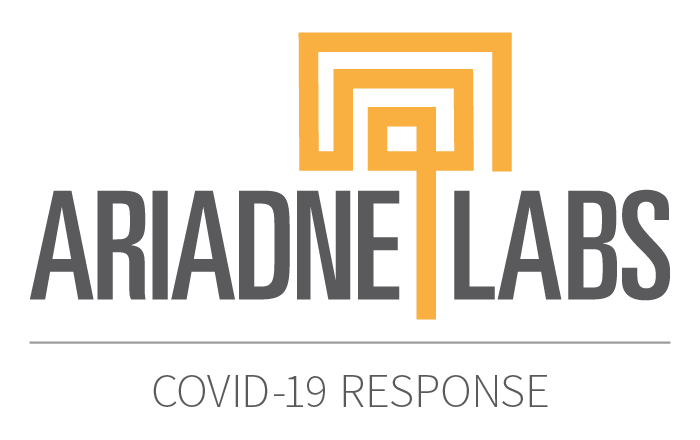In response to the COVID-19 pandemic, the American Academy of Pediatrics (AAP) recommended on March 18, 2020:
- “Keep children out of the health care system if it’s not necessary.
- Use telemedicine and other non-direct care, when appropriate.
- Review infection-control measures, including asking patients with symptoms to call ahead so they can be evaluated in isolation from other patients.”
COVID-19 is impacting every health care setting, and primary care pediatric practice is no exception. We’ve never seen anything like this pandemic and there’s no time to wait for formal evidence. Throughout the health care community, the key objectives are to reduce patient exposure and protect the health care workforce. These objectives require rapid changes in priorities, practices, procedures, and risk-benefit calculations. Compromises not acceptable under normal circumstances must be considered as health care facilities, staff, and equipment are stressed by the surge. Well Child Care and vaccinations are, of course, necessary and pediatricians are rapidly reassessing how, when, and where to provide them.
Some practices have been able to implement the following changes rapidly even with limited resources. Not all will be relevant or feasible for every practice, and better strategies may supersede them as the pandemic and response – including testing and PPE availability – continue to evolve. We report on these practices to stimulate the rapid innovation of adaptations for the wide range of practice and community settings, resources, and needs. These are not guidelines or recommendations, but suggestions for practices to consider as they respond to conditions that are changing by the hour, and that vary widely across the country. We expect that guidance from the American Academy of Pediatrics and the Centers for Disease Control will also continue to evolve.
Engaging with Families to Keep Healthy Kids out of the Clinic
Triage all patients: onsite clinic visit vs. telehealth visit vs. deferred visit vs. refer to ER
The goal of triaging to reduce COVID-19 patient traffic in outpatient clinics is to limit the virus’s spread, to protect outpatient clinic capacity to treat urgent non-COVID-19 acute illness, and to protect ER/hospital capacity to treat seriously ill COVID-19 patients.
Appointment reminder calls
Use 24-hour advance reminder calls to triage patients who must be seen in the clinic, and those who can be treated by telephone or virtual visit. Before medical assistants make appointment reminder calls, providers should huddle with them – by phone or virtually whenever possible.
COVID-19 Screening
Medical assistants should use standardized COVID-19 screening questions (e.g., known positive or suspected COVID-19 contact, fever, cough, respiratory distress) during triage calls and for drop-ins. Any positive screens should be discussed with a nurse or physician to make the following determinations.
- If COVID-19 infection is suspected but symptoms are mild, and there are no underlying medical conditions, the patient should remain or return home, and an urgent telehealth visit should be scheduled.
- If symptoms are mild, but the patient has underlying medical conditions predisposing to serious COVID-19 morbidity, more frequent phone or virtual monitoring is indicated.
- If symptoms are severe, the medical assistant should immediately consult with the provider to determine if an ER referral is warranted.
COVID-19 Prevention
Use the appointment reminder calls to check that families understand and use effective handwashing and physical distancing practices.
- Advice on social distancing and community mitigation
- Advice on social distancing for families (also available in Spanish)
Well Child Visits
Consider deferring well child visits for all children except those two months old and younger, and substituting vaccination-only appointments. Whenever possible administer vaccinations at offsite locations. (See alternative locations suggestions below.) Routine newborn, two-week, and two-month visits may be necessary, but when safe and feasible, consider conducting them and administering vaccines in home visits or other settings that are less likely to be COVID-19 contaminated and allow for more optimal social distancing than the clinic. Offer parents the option of telehealth visits for any questions or concerns. Reassure parents that the clinic will remain open only for essential visits in order to protect families from COVID-19. Some insurers may not currently cover telehealth Well Child Visits.
Vaccinations
When indicated, bring children in for rapid vaccination-only appointments and whenever possible and when regulations allow, innovate alternative locations outside of the clinic building for vaccine administration. These may include home visits when safe and feasible, parking lots, tents, or non-health care related community facilities that have been closed due to the pandemic such as schools. Wherever possible, provide 6 feet of space between each family at all times. If patients must be brought into the clinic for acute illness, these urgent care visits can also be used to catch up on missed vaccinations if the patient does not have a fever.
Other epidemics can be prevented by ensuring that children are vaccinated without undue delay. Consult the Center for Disease Control’s “Catch-up Immunization Guidelines.” VFC is a vaccine program for patients with Medicaid. Its regulations may limit transporting vaccines to alternate sites.
Telephone or Virtual Visits
For patients scheduled for appointments that can be performed virtually or by phone, keep clinic appointment slots and simply re-label as telehealth visits. If staffing allows, offer telehealth (e.g., zoom, google voice, doxy.me, etc.) well child anticipatory guidance and routine screenings. Remind parents that the doctor will call as close as possible to the appointment time for the phone visit. Telehealth regulations are being loosened during this health emergency. Verify changes in state Medicaid and CHIP regulations regarding telehealth reimbursement. For billing purposes, standardized telehealth templates may help that include phrases such as “public health guidelines direct that the patient remain at home;” “this is a telehealth visit in a pandemic;” “this virtual/telephone encounter is intended to take the place of a face-to-face visit;” “this virtual visit is medically necessary;” “this visit is clinically appropriate for virtual communication;” etc.
If reimbursement rates equivalent to office visits are not in place, this is a high priority for advocacy to keep primary care clinics open and financially viable during this health care emergency.
COVID-19 Testing
Bringing patients into the clinic for COVID-19 testing puts patients and staff at increased risk for exposure and can jeopardize the clinic’s capacity to serve patients in need of urgent care for non-COVID-19 conditions. When these are locally available, COVID-19 testing performed at sites separate from the clinic building can reduce staff and patient exposure. Clinics can provide referral for testing at such sites.
Staffing
Staff Scheduling
Consider decreasing onsite clinic staffing to reduce staff exposure risk and preserve staffing capacity. Staff performing telephone triage and telehealth visits should work from home whenever possible. Continuity can be provided through telehealth visits, but during this health care emergency, may not be possible in the clinic. Some clinics have initiated 14-day staff work cycles. Given current data suggesting a 5 to 14-day incubation period, 14 days on/14 days off work cycles for all staff may significantly reduce the risk of spreading infection.
Staff exposures
Staff who have been exposed to the virus should be required to self-quarantine for 14 days. To maintain staffing levels during the surge, staff who have been exposed to the virus but remain asymptomatic should not return to the clinic for 14 days, but can conduct telehealth visits and other tasks that can be performed remotely. Communication between exposed and non-exposed staff members should be conducted via phone, virtual technology, or email rather than in person. Self-quarantine and remote work protocols may be revisited as rapid turn around COVID-19 testing and sufficient PPE supplies become available.
If full pay sick leave is not already in place to allow staff who have been exposed paid time off, this is a high priority for advocacy.
Social Determinants of Health
Pediatricians take into account families’ living environments, access to material supports, and language and literacy levels advise them about the pandemic accordingly. They know what supports and accommodations the families they work with need in order to follow through with prevention recommendations and treatment plans. They will need to review their risk-benefit calculations for supports and accommodations that increase risk of exposure, for example home visits and staff accompaniment of patients to pharmacies. Whenever they can, providers should use three way calling to patch in interpreters for telehealth visits when they do not speak the languages of their patients.
Many national organizations and local schools are offering educational and emotional support resources online that parents can use with their children who are home due to child care and school closures. These include Abriendo Puertas, Brazelton Touchpoints Center, Child Care Aware of America, National Association for the Education of Young Children, National Head Start Association, Parents as Teachers, Sesame Workshop, Zero to Three, among many others.
Protecting Patients and Staff Who Must Come to the Clinic
Clinic Entrance and Waiting Room
COVID-19 Screening
Patients and family members should be triaged before entering the clinic building. Ideally, only patients and family members with negative COVID-19 screenings should enter the building. Place signs at the building’s entrance and in the parking lot advising patients to call before coming in if they have not already been triaged by phone in the preceding 24 hours. The signs should be in the languages understood by the clinic’s patient population. If significant numbers of families do not read, simple symbols on the signs may help, and the clinic may decide to place a staff member wearing PPE in front of the building to greet and triage.
COVID-19 Precautions
Because screenings may not detect asymptomatic carriers, heightened exposure prevention measures are needed in the waiting room. These are also necessary because children who need to be seen for other acute illnesses and had screened negative for COVID-19 may turn out to be COVID-19 positive. If sufficient mask supplies are available, all patients and accompanying family members should be given masks at the building entrance. When supplies are limited or uncertain, consider giving masks only to patients and family members with fever or cough. Six feet of physical distance between family groups and between families and staff should be maintained.
Waiting Room Precautions
When space allows, separate waiting rooms for patients with fever or respiratory symptoms may be used, although such arrangements provide limited exposure prevention at best. If sufficient hand sanitizer is available, strategically place hand sanitizer stations at the building and waiting room entrances, in the waiting room, and at the reception desk. Hang hand washing reminder signs above them. Patients in the waiting room and office staff can communicate by phone to maintain physical distance. Place signs in the waiting room asking patients to call on their phones from their seats to provide their intake information to front desk office staff in the waiting room to reduce front desk office staff exposure and to model and reinforce social distancing. Include the phone number on the sign.
Patient registration and payments
Forego all non-essential paperwork usually required of patients. For any essential paperwork, provide single use pens that can be sterilized between each use. Disinfect clipboards between each use. Instruct parent or caregiver to deposit paperwork in a designated closed box with a slot. Payment, co-pays, insurance information should be exchanged over the phone or virtually whenever possible. Rather than handling credit cards, office staff should ask that credit card information be provided verbally for entry. Touchpads should be disinfected after each use.
Exam and Treatment Rooms
Clean and dirty exam rooms
If clinic space allows, separate “clean” and “dirty” exam rooms can be designated but should not create a false sense of protection. Clean rooms will inevitably become contaminated. These designations can serve as reminders of additional precautions that are necessary when a suspicion of COVID-19 emerges during the clinic visit despite negative screening during telephone triage, or when assessing patients with confounding symptoms and medical history such as acute asthma exacerbation.
Treatment precautions
Due to the risk of aerosolizing COVID-19, no nebulizer treatments should be administered in clinic. Instead, when needed, albuterol should be given via metered dose inhaler (MDI) with a spacer. Spacers that can be disinfected may be reused, or, if supplies allow, given to patients to use at home.
Equipment clean up
If the clinic uses centralized vitals, baby weighing, or other stations, extra care should be taken to disinfect these before and after each use. Computer keyboards, phones and other office equipment, as well as centralized office materials, such as those in waiting and reception areas, should be frequently disinfected.
History taking, examination, and testing for necessary in-person visits
To sustain and model social distancing during the office visit, health care providers in the office can call parents who are in the exam room on their cell phones to take the history and share diagnostic findings and treatment recommendations. Consider omitting any non-essential assessment that requires physical contact with the patient or that contaminates equipment.
Personal Protective Equipment (PPE) – Rationing, preserving, and reusing PPE supplies
Protecting the health care workforce is a top priority. This requires rational use of PPE (e.g., masks, face shields, gowns, etc.), and innovative approaches to safely extend the use of existing supplies until adequate supplies become available and are effectively distributed. See Atul Gawande’s New Yorker article for lessons learned from the COVID-19 experiences in Singapore and Hong Kong.
Looking Ahead
We need rapid turnaround COVID-19 testing available in safe freestanding sites accessible for all, and enough PPE for health care and other essential workers. When we can test everyone with exposure or symptoms, and isolate everyone who tests positive, we can bring back to work – wearing PPE – all essential workers with exposure but no symptoms and negative tests. Then, we can end the economic shutdown and bring kids back to the clinic.
Céline Sparrow, La Clínica de La Raza, Oakland CA
Evan Benjamin, Ariadne Labs, Brigham and Women’s Hospital, Harvard T.H. Chan School of Public Health
Dan Schwarz, Ariadne Labs, Brigham and Women’s Hospital, Harvard T.H. Chan School of Public Health
Kim Wilson, Martha Eliot Health Center, Boston Children’s Hospital Harvard Medical School
Joshua Sparrow, Brazelton Touchpoints Center, Boston Children’s Hospital, Harvard Medical School
This article was prepared by the authors, and the opinions and suggestions expressed in it are the authors’ and may not reflect the view of the organizations or institutions these authors are affiliated with.


